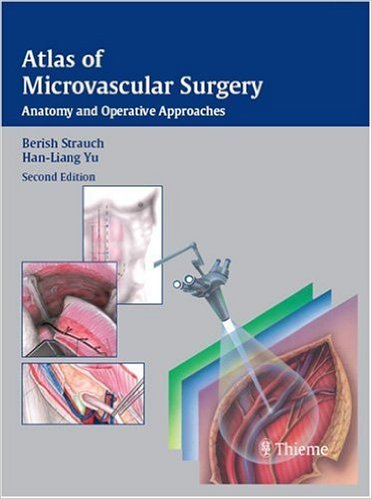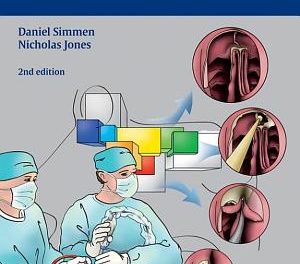Authors: Berish Strauch, MD; and Hang-Liang Yu, MD
Medical Illustrator: Liugo Liang
Publisher: Thieme – 686 pages
Book Review by: Nano Khilnani
It was in the 1960s when microvascular surgical techniques applied in China and in the United States, resulted in the first successful replantations (reattachments) of upper extremities including arms, hands, and fingers. After such achievements, technological advancements ensued, such as improvement of optical devices, new instruments, and suture materials, which in turn made microsurgical procedures easier to do, with results even better than before.
In the 1970s, these operative, instrumental, and tooling innovations led to free tissue transfers, or vascular dissection and detachment of tissue from one part of the body of the patient for reattachment to another part of his or her body. These tissue transfers included skin flaps, revascularized muscle, bone, and nerve grafts, and toe transfers as well.
The most critical tasks in replantation are in the field of microvascular surgery, which is the principal focus of this amazingly useful atlas. Credit for the material used in this large, painstakingly laid-out book of nearly 700 pages goes of course to the two authors named above.
But much of the credit for the advanced level of microvascular surgery that China, the United States and other countries have reached – goes to the pioneering surgeon Dr.Zhong-Wei Chen, who lived from 1929 to 2004. He laid the path for microvascular surgery in upper and lower limbs. His story of incredible, milestone accomplishments in the operative approaches in replantation is presented at the beginning of this book.
Drs. Berish Strauch and Hang-Liang Yu share their knowledge, experience, expertise, and insight in this valuable Atlas of Microvascular Surgery with essential how-to’s, along with clear and detailed, visual anatomic presentations by Liugo Liang. The operative approaches pertaining to the upper and lower extremities are outlined below:
Introduction
- Part I – Upper Extremity
- Shoulder, Arm, Axilla
- Forearm Region
- Hand and Wrist
- Part II – Lower Extremity
- Gluteal Region
- Groin Region
- Thigh Region
- Lower Leg and Knee
- Ankle and Foot
- Part III – Trunk
- Thorax
- Abdominal Wall and Cavity
- Back
- Part IV – Head and Neck
- Head and Neck
This second edition of the book appeared in 2006. It contains a lot of textual and visual material on the topics outlined above, with its coverage being quite extensive. The original edition published in 1992, also distinguished itself by being the first to provide a comprehensive approach to microsurgical anatomy, the authors point out in the Preface.
We urge the readers not to skip the Introduction, as it provides an essential perspective prior to looking at and reading about surgical techniques. Specifically:
- Read the Definitions section to understand the differences among microsurgery, microvascular Surgery and reconstructive microsurgery.
- Go through the Training in Basic Microsurgical Techniques section where the authors write that you “must be well trained in microvascular techniques on animal models in the laboratory before attempting clinical trials.”
- Understand the Exposure of Recipient Vessels section in which you are cautioned that there are defects and deformities in recipients, so you must adjust or modify the described techniques for each individual case.
- Acquire specific knowledge of the anatomy of donor-tissue blood supply which is absolutely indispensable for harvesting procedures, so closely read the Microsurgical Anatomy and Its Variations
- Know that there are numerous donor sites in the body that can provide materials for the restoration of function or appearance at other sites with little or no morbidity. Get this information in the Donor Sites
- Consider the design of the flap in the Flap Design In some instances, angiography or Doppler flowmetry may be required.
- Review in detail the anatomy and its variations prior to surgery. The Harvesting Techniques section is helpful in his respect.
- Get the benefit of the experience of the authors in the Comments and Insights section
This is an authoritative, well organized, truly outstanding volume on microvascular surgery, with step-by-step operative instructions, and large, clear, detailed, fine illustrations, with captions. It is definitely a keepsake for anyone who wants to become a competent microsurgeon.
Authors:
Berish Strauch, MD is Professor and Chair of the Department of Plastic and Reconstructive Surgery at Albert Einstein College of Medicine of Yeshiva University and Montefiore Medical Center in the Bronx, New York.
Hang-Liang Yu, MD is Associate Clinical Professor in the Department of Plastic and Reconstructive Surgery at Albert Einstein College of Medicine of Yeshiva University and Montefiore Medical Center in the Bronx, New York.
Medical Illustrator:
Liugo Liang







